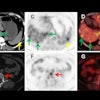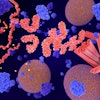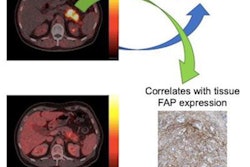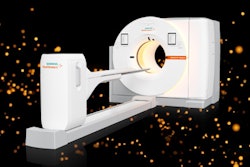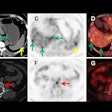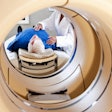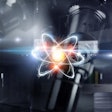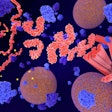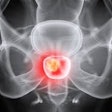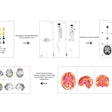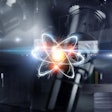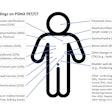PET/CT scans can help guide treatment decisions and identify which patients with soft tissue sarcomas are most likely to benefit from treatment, researchers have reported.
In a prospective trial involving 69 patients who were followed for more than eight years, patients with lower tumor activity on PET/CT after chemotherapy lived longer and were less likely to relapse, noted lead author Edward Cheng, MD, of the University of Minnesota in Minneapolis, and colleagues.
“Metabolic imaging at treatment completion identified responders, supporting continued therapy in initially nonresponsive patients and guiding personalized treatment strategies,” the group wrote. The study was published October 10 in Cancer.
Neoadjuvant chemotherapy refers to chemotherapy given prior to surgery to shrink tumors to improve the success of the surgery. Yet only 30% to 40% of patients with high-grade sarcomas respond to initial chemotherapy, which also can have significant toxicities, the researchers explained. Conventional CT scans, which capture changes in tumor size, have historically been insufficient for predicting sarcoma outcomes, as tumor size alone does not reliably reflect the response to treatment, they added.
The group hypothesized that F-18 FDG-PET/CT may serve as an alternative, as it offers the advantage of assessing both tumor metabolism and size changes. Primarily, they assessed whether early changes in the maximum standardized uptake value (SUVmax) on PET/CT images after one or four cycles of neoadjuvant chemotherapy can be used to predict outcomes.
Between 2006 and 2014, the researchers enrolled 69 patients older than 16 who had high-grade soft tissue sarcomas of the extremities or body wall, with tumors larger than 5 cm in greatest dimension. All patients underwent F-18 FDG-PET/CT scans (Biograph-16 or mCT-64, Siemens Healthineers) at baseline before chemotherapy, after cycle 1 of chemotherapy, and after cycle 4 of chemotherapy, just before surgery.
The follow-up period continued until May 2021. The researchers calculated changes in SUVmax and categorized patients as responders if they had a ≥ 40% reduction in the SUVmax or as nonresponders if they had a < 40% reduction in the SUVmax.
According to the analysis, the five-year progression-free survival (PFS) rate for responders after one cycle of chemotherapy was 74% compared with 44% in nonresponders. This difference remained significant at 10 years, with a PFS rate of 74% in responders versus 42% in nonresponders. In addition, responders after one cycle of chemotherapy had a significantly reduced risk of progression or relapse compared with nonresponders (hazard ratio, 0.44; p = 0.026), the researchers reported.
Similarly, the five-year PFS rate for responders after four cycles of chemotherapy was 72% compared with 33% in nonresponders. At 10 years, the PFS rate was 69% in responders after four cycles versus 33% in nonresponders.
“This study represents one of the largest prospective trials, with the longest follow-up time, of FDG-PET for assessing the response to neoadjuvant chemotherapy in patients with high-grade soft tissue sarcomas,” the group wrote.
Ultimately, the study reinforces F-18 FDG-PET/CT as a powerful tool for refining prognosis and informing therapy in high-grade sarcomas, the group concluded.
The full story is available here.

